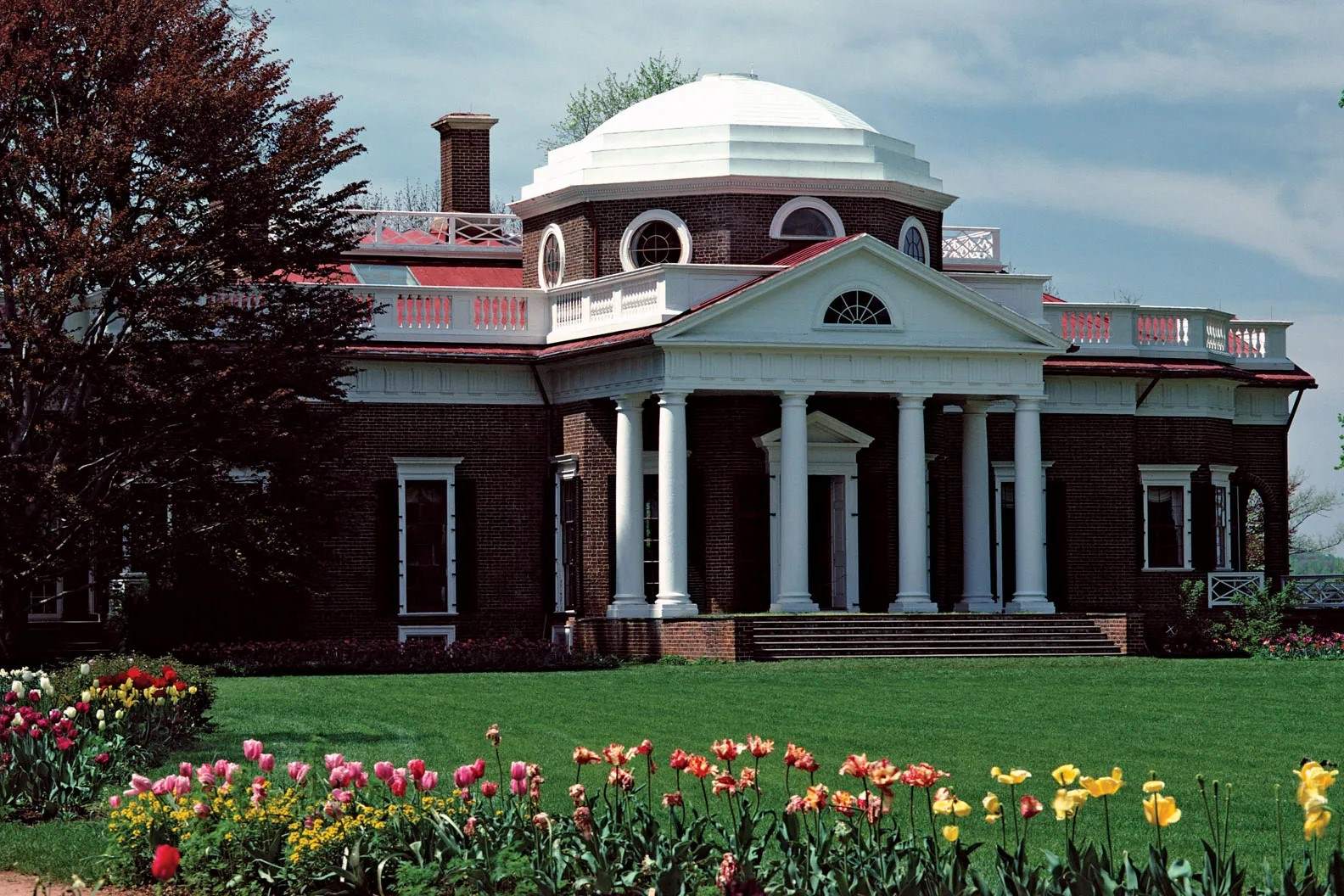Secrets Behind Thomas Jefferson’s Monticello

Have you ever wondered what makes Thomas Jefferson's Monticello so special? This historic estate, located in Charlottesville, Virginia, offers a glimpse into the life of one of America's Founding Fathers. Jefferson designed and built Monticello himself, blending European elegance with American practicality. The house features innovative gadgets, beautiful gardens, and stunning architecture. Visitors can explore Jefferson's study, where he penned many important documents, and walk through the lush grounds that reflect his love for nature. Whether you're a history buff or just curious, Monticello provides a unique window into the past. Ready to learn more? Let's dive in!
The Architectural Marvel of Monticello
Thomas Jefferson's Monticello stands as a testament to his architectural genius. This iconic estate, located in Virginia, showcases Jefferson's unique blend of classical and modern design elements. Let's explore some of the most fascinating aspects of this historical gem.
- The Dome Room
The Dome Room, located on the third floor, is one of Monticello's most striking features. This octagonal room, with its large skylight, was inspired by Roman architecture. Jefferson used it as a private retreat, a place for contemplation and study.
- The Portico
The Portico, with its grand columns and sweeping views, serves as the main entrance to Monticello. Jefferson designed it to impress visitors, combining elements of Greek and Roman architecture. The Portico also offers a stunning view of the surrounding landscape.
Jefferson's Innovations
Jefferson was not just an architect; he was also an inventor. Monticello is filled with his ingenious creations, many of which were ahead of their time.
- The Great Clock
The Great Clock, located in the entrance hall, is a marvel of engineering. It not only tells time but also tracks the days of the week. Jefferson designed it to be both functional and decorative, with weights that descend through the floor to the basement.
- The Dumbwaiter
Jefferson's dumbwaiter, installed in the dining room, was a clever solution for transporting food and wine from the cellar. This small elevator allowed servants to move items discreetly, maintaining the elegance of dinner parties.
The Gardens and Grounds
Monticello's gardens and grounds reflect Jefferson's passion for horticulture and landscape design. He meticulously planned every aspect, creating a harmonious blend of beauty and utility.
- The Vegetable Garden
The Vegetable Garden spans 1,000 feet and features a wide variety of plants. Jefferson experimented with different crops, documenting his findings in his garden book. This garden not only provided food for the estate but also served as a living laboratory.
- Mulberry Row
Mulberry Row was the industrial hub of Monticello, where enslaved workers and craftsmen lived and worked. This area included workshops, stables, and quarters, highlighting the complex social structure of the estate.
Jefferson's Private Spaces
Monticello also housed Jefferson's private quarters, where he could retreat from public life. These spaces offer a glimpse into his personal interests and daily routines.
- The Library
Jefferson's library contained thousands of books on various subjects, reflecting his wide-ranging interests. He believed in the power of knowledge and spent countless hours reading and writing in this room.
- The Tea Room
The Tea Room, located adjacent to the library, was a cozy space where Jefferson could relax with a cup of tea. This room features large windows that provide ample natural light, creating a serene atmosphere.
The Legacy of Monticello
Monticello remains a symbol of Jefferson's legacy, embodying his ideals and innovations. Each corner of the estate tells a story, offering insights into the mind of one of America's founding fathers.
- The South Pavilion
The South Pavilion was the first building constructed on the Monticello estate. Jefferson lived here while the main house was being built. This small, two-story structure reflects his early architectural style.
- The Graveyard
The Monticello Graveyard is the final resting place of Thomas Jefferson and many of his descendants. This serene spot, marked by a simple obelisk, serves as a poignant reminder of Jefferson's enduring impact on American history.
Monticello's Timeless Appeal
Monticello stands as a testament to Thomas Jefferson's genius. This architectural marvel showcases his love for innovation, art, and nature. Visitors can explore the unique design of the house, the beautiful gardens, and the historical artifacts that tell stories of early American life. The estate offers a glimpse into Jefferson's mind, revealing his passion for learning and commitment to progress. Whether you're a history buff or just curious, Monticello provides a rich, educational experience. Its timeless appeal continues to draw people from all over, making it a must-visit destination. So, next time you're planning a trip, consider stepping into the past at Monticello. You'll leave with a deeper appreciation for one of America's most influential figures.

